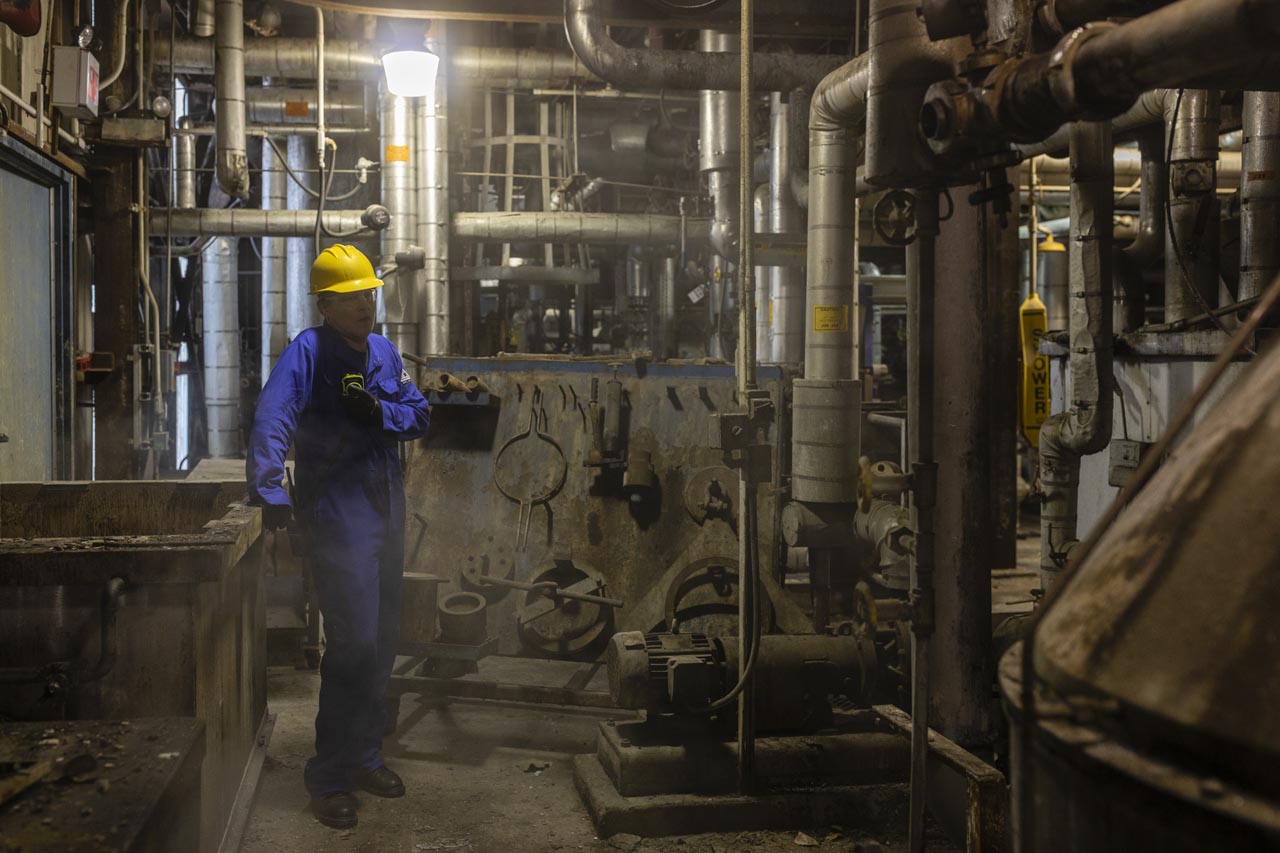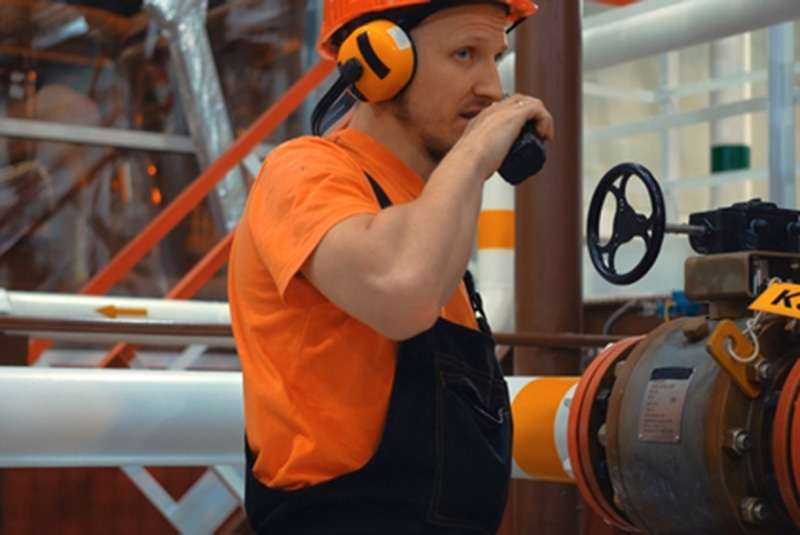Enhancing Safety with Two-Way Radios in High-Risk Environments


In industries where safety is a top concern, such as construction, chemical manufacturing, and emergency services and locations, or premises where environments may be challenging, maintaining constant communication is crucial.
Two-way radios are a key component in enhancing worker safety in these high-risk environments, providing reliable and instant communication even in isolated areas or hazardous conditions.
Enhancing safety with two-way radios means equipping teams with advanced features specifically designed for worker protection, such as GPS tracking, man-down alerts, lone-worker monitoring, and emergency alarms. These capabilities make two-way radios essential for safeguarding workers, particularly lone workers, who are often exposed to the greatest risks.

Enhancing Safety with Two-Way Radios – The Significance of Emergency Alarms and Remote Monitoring.
Emergency alarms are vital for worker safety, especially in high-risk environments where accidents can happen at any time. Two-way radios with emergency buttons allow workers to quickly signal for help in case of an emergency. Whether the worker is injured, trapped, or otherwise unable to communicate, activating the emergency alarm ensures that help is on the way.
Remote monitoring features further enhance safety by allowing supervisors to monitor workers’ statuses in real time. These systems can track vital signs, movement patterns, and environmental conditions, alerting managers to any irregularities. For example, if a worker falls or becomes immobile, the remote monitor can send a distress signal to initiate an immediate response. These advanced monitoring systems help create a safety net for workers, ensuring that assistance is available when needed most.
Pre-defined groups are another critical feature in communication systems, especially in environments where safety is paramount. These groups enable targeted and efficient communication by categorising users based on roles or tasks, ensuring the right information reaches the right individuals without delay. This functionality is essential for enhancing safety in workplaces, emergency response scenarios, and high-risk operations, where rapid and precise communication can prevent accidents and save lives.


Enhance Safety in High-Risk Environments with Reliable Two-Way Radios
Discover how two-way radios can improve safety and communication in high-risk environments. Ensure seamless connectivity, rapid response, and enhanced protection for your team with durable, reliable solutions designed for critical situations.
Key Safety Features of Two-Way Radios for High-Risk Environments

Emergency Button
A one-touch feature that allows workers to immediately request assistance during an emergency. Manual activation of the alarm is available and enables workers to initiate emergency alerts instantly in critical situations.

Lone Worker Function
This feature continuously monitors workers’ activity and ensures their safety by automatically sending an alert if the worker fails to check in within a designated timeframe or if the radio remains at a certain angle, potentially indicating a fall or incapacitation. By detecting these scenarios promptly, this system helps enable swift intervention and minimizes response time in emergency situations, providing an added layer of protection for workers in high-risk environments.

Intrinsically Safe Radios
These radios are specifically designed to prevent ignition in hazardous environments, making them an essential safety tool in industries where explosive atmospheres are a risk. Engineered to meet stringent ATEX standards, they ensure reliable communication without sparking or causing explosions in areas with flammable gases, vapors, or dust.
By utilising intrinsically safe technology, these radios enable workers to operate confidently in ATEX zones, reducing risks and maintaining seamless communication in even the most dangerous conditions. This advanced safety feature is critical for protecting both personnel and assets in high-risk work environments.

Man-down Feature
The lone-worker feature detects when a worker is motionless or has fallen. The device sends an automatic alarm to designated team members, ensuring swift intervention. With customisable settings, the man-down feature can be tailored to suit specific operational needs, ensuring it responds appropriately. By integrating such advanced safety capabilities, two-way radios address critical challenges, keeping employees connected, supported, and protected even in the most hazardous conditions. worker features, two-way radios address key safety challenges, ensuring employees remain connected and supported.

GPS Tracking and Geo-Fencing
Geo-fencing and GPS tracking features provide real-time location monitoring, enhancing worker safety and operational efficiency. These tools enable supervisors to set virtual boundaries, triggering alerts if workers enter restricted or hazardous zones.
By combining precise tracking with automated notifications, these features help mitigate risks by ensuring workers are aware of their surroundings and stay within safe areas. This proactive approach to safety not only protects employees but also streamlines incident response, making it easier to act swiftly in case of emergencies.

Priority Interrupt
In an emergency, critical communications can override other messages, ensuring that important messages are received immediately.
Two-Way Radios in High-Risk Environments
High-risk environments, such as those with explosive atmospheres or areas with electrical equipment, demand reliable communication solutions. In these environments, two-way radios offer a robust, secure means of staying connected with workers. Radios that are certified as intrinsically safe prevent accidental ignition of flammable gases, protecting both workers and the surrounding environment.
In industries like chemical manufacturing, where exposure to hazardous chemicals is common, two-way radios with integrated safety features ensure that workers are always in communication with their supervisors. The emergency alarm and distress signal features are especially important, enabling workers to raise an alarm quickly if they encounter a dangerous situation.
Protecting Workers Across Various Industries
Two-way radios are used in a wide range of industries, from logistics and construction to healthcare and emergency services. In these industries, the need for constant communication is paramount, and two-way radios provide a reliable solution for ensuring worker safety. Whether coordinating a team on a construction site or tracking workers in remote areas, these radios are essential for creating a safe work environment.
Two-way radios play an essential role in enhancing safety in high-risk environments. With advanced safety features like GPS tracking, lone worker functions, emergency alarms, and remote monitoring, these radios offer a reliable means of communication that help protect workers in hazardous conditions.
By ensuring seamless communication and providing real-time updates on worker locations and statuses, two-way radios significantly improve worker safety and help reduce the risks associated with high-risk work environments. Whether in construction, chemical manufacturing, or emergency services, two-way radios are an indispensable tool for safeguarding employees’ well-being.

Get in Touch
For more information on enhancing safety with two-way radios contact us today to learn how we can tailor a system to meet your organisation’s specific needs.
